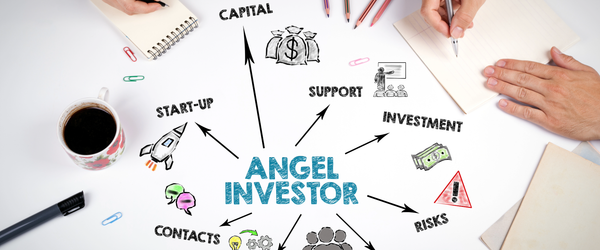What is Cryptocurrency and Digital Assets? A Beginner's Complete Guide for 2025

In recent years, the buzz around cryptocurrency and digital assets has exploded. Whether you hear about Bitcoin soaring in value or NFTs making headlines, these terms often come up in conversations about the future of money and investments. But what exactly are cryptocurrencies and digital assets? How do they work, why do they matter, and should you consider investing?
This guide is designed to break down everything you need to know about cryptocurrency and digital assets — in simple terms, without confusing jargon. By the end, you’ll have a clear understanding of what they are, how they operate, their benefits and risks, and what the future might hold.
What is Cryptocurrency?
At its core, cryptocurrency is a type of digital or virtual money that uses cryptography (advanced encryption techniques) to secure transactions. Unlike traditional money issued by governments (called fiat currency like the US dollar or euro), cryptocurrencies operate on decentralized networks — typically blockchain technology — that allow peer-to-peer transactions without the need for banks or middlemen.
Key Features of Cryptocurrency:
- Decentralization: No single authority controls the currency.
- Digital Nature: Exists only electronically, no physical coins or bills.
- Secure Transactions: Uses cryptography to verify and secure transfers.
- Limited Supply: Most cryptocurrencies have a cap on how many coins will ever exist, unlike printing more money.
- Transparency: Transactions are recorded on public ledgers (blockchains), visible to anyone.
How Does Cryptocurrency Work?
Most cryptocurrencies operate on a blockchain, a special kind of database that stores information in blocks linked together in a chain. Each block contains transaction data that is verified by a network of computers (called nodes or miners). This process prevents fraud and double-spending and ensures all participants agree on the transaction history — known as consensus.
Here’s a simple example:
- You want to send 1 Bitcoin to a friend.
- Your transaction is grouped into a block.
- Miners validate this block by solving complex math problems.
- Once validated, the block is added to the blockchain.
- Your friend receives the Bitcoin, and the transaction is permanent and visible on the blockchain.
What are Digital Assets?
Digital assets are broader than cryptocurrencies. While all cryptocurrencies are digital assets, not all digital assets are cryptocurrencies.
Digital assets include:
- Cryptocurrencies like Bitcoin, Ethereum, and Litecoin.
- Tokens that represent ownership or access, such as NFTs (Non-Fungible Tokens).
- Digital representations of physical assets (e.g., real estate, art, or gold) tokenized on a blockchain.
- Smart contracts — self-executing contracts coded on blockchains.
- Stablecoins — cryptocurrencies pegged to stable assets like the US dollar.
In short, digital assets are any asset stored electronically that have value and can be traded or transferred digitally.
Popular Cryptocurrencies to Know
- Bitcoin (BTC): The first and most well-known cryptocurrency, created in 2009 by an unknown person or group named Satoshi Nakamoto. Bitcoin is often called "digital gold" because of its limited supply and store of value.
- Ethereum (ETH): Launched in 2015, Ethereum is a platform for decentralized applications (dApps) and smart contracts, not just a currency. Its cryptocurrency, Ether, is the second largest by market cap.
- Binance Coin (BNB): Native token of the Binance exchange, used for trading fees and other applications.
- Ripple (XRP): Focuses on fast cross-border payments for financial institutions.
- Cardano (ADA), Solana (SOL), Polkadot (DOT): Other major blockchains focused on scalability and smart contracts.
Why Are Cryptocurrencies Important?
1. Financial Inclusion
Cryptocurrencies can provide financial services to millions of people without access to traditional banks, especially in developing countries.
2. Lower Transaction Costs
Sending money internationally via traditional methods can be expensive and slow. Crypto transactions are faster and cheaper.
3. Transparency and Security
Blockchain technology makes transactions transparent and nearly impossible to alter once recorded.
4. New Investment Opportunities
Crypto assets offer a new class of investment with the potential for high returns (and high risk).
What Are the Risks of Cryptocurrency?
Volatility
Cryptocurrency prices can swing wildly. For example, Bitcoin has experienced multiple boom-and-bust cycles.
Regulatory Uncertainty
Governments worldwide are still figuring out how to regulate cryptocurrencies, which can impact prices and usability.
Security Risks
While blockchain is secure, crypto wallets and exchanges can be hacked, potentially leading to losses.
Scams and Fraud
The crypto space is sometimes targeted by fraudulent schemes, so due diligence is critical.
How to Invest in Cryptocurrency and Digital Assets
1. Choose a Reliable Crypto Exchange
Popular exchanges include Coinbase, Binance, Kraken, and Gemini.
2. Create a Wallet
A crypto wallet stores your private keys and allows you to send and receive coins. There are hot wallets (online) and cold wallets (offline, more secure).
3. Research and Diversify
Study different cryptocurrencies and digital assets before investing. Don’t put all your money into one coin.
4. Understand Your Risk Tolerance
Only invest what you can afford to lose given the market’s volatility.
The Rise of NFTs and Tokenization
NFTs (Non-Fungible Tokens) are unique digital assets that represent ownership of a specific item, often art, music, or collectibles. Unlike cryptocurrencies, NFTs are not interchangeable. They have opened new avenues for artists and creators to monetize digital works.
Tokenization is also expanding to traditional assets, enabling fractional ownership in real estate, stocks, or commodities via digital tokens.
The Future of Cryptocurrency and Digital Assets
Increased Adoption
More companies and institutions are accepting cryptocurrencies as payment or investment vehicles.
Integration with DeFi (Decentralized Finance)
DeFi platforms use blockchain to offer financial services like loans, insurance, and savings without intermediaries.
Central Bank Digital Currencies (CBDCs)
Governments are exploring issuing their own digital currencies, blending blockchain benefits with official backing.
Cryptocurrency and digital assets represent a revolutionary shift in how we think about money, ownership, and finance. While the space is still evolving and comes with risks, its potential to democratize access to financial services, introduce new investment opportunities, and transform industries is undeniable.
Whether you’re curious about buying Bitcoin or exploring NFTs, understanding these digital innovations is essential in today’s technology-driven world.



